Aerospace
World’s Best Airports 2015
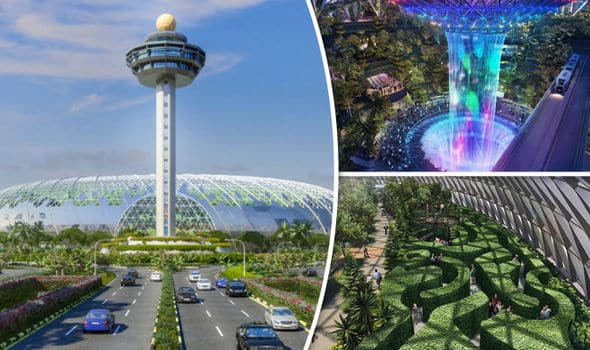
1. SINGAPORE CHANGI AIRPORT
Changi Airport serves more than 100 airlines flying to some 300 cities in about 80 countries and territories worldwide. Each week, about 6,500 flights land or depart from Changi, with more than 54.1 million passengers passing through the airport in 2014.
Changi Airport has three passenger terminals with a total annual handling capacity of 66 million passengers. Terminal 1 opened in 1981, followed by Terminal 2 in 1990 and Terminal 3 in 2008. The Budget Terminal, opened on 26 March 2006 and closed on 25 September 2012, will make way for Terminal 4 which will be ready by 2017. Changi Airport Terminal 5 is set to be ready in mid-2020s which will be able to handle 50 million passenger movements per annum
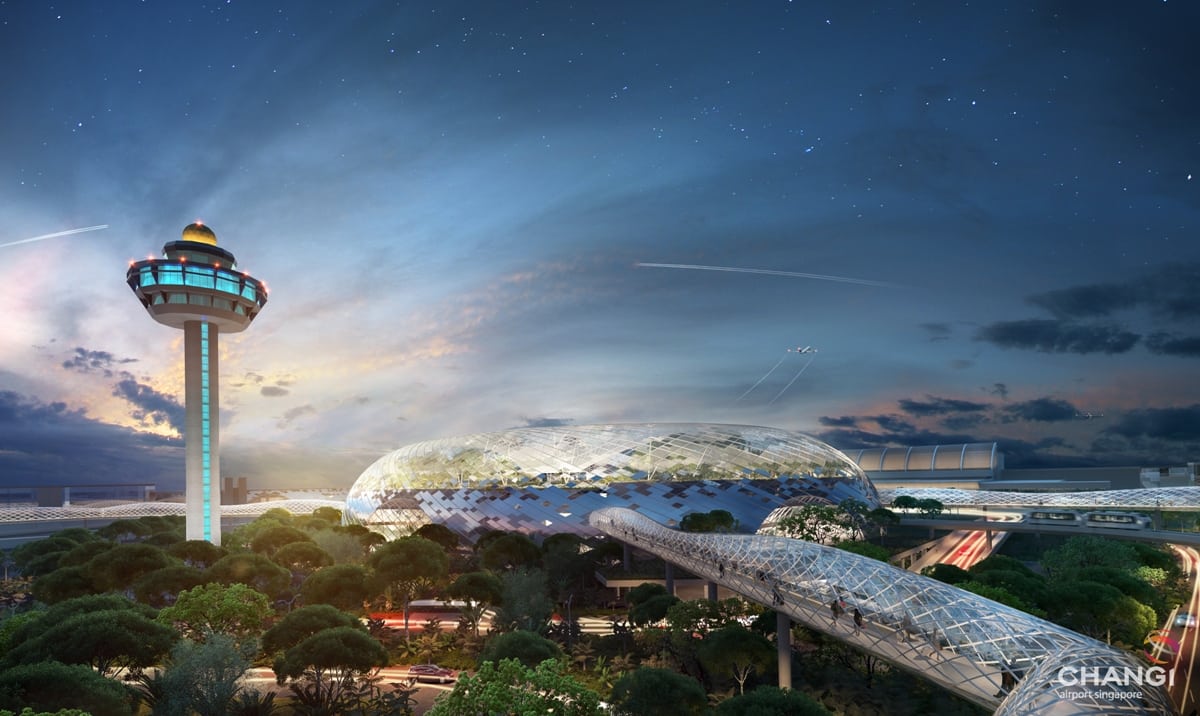
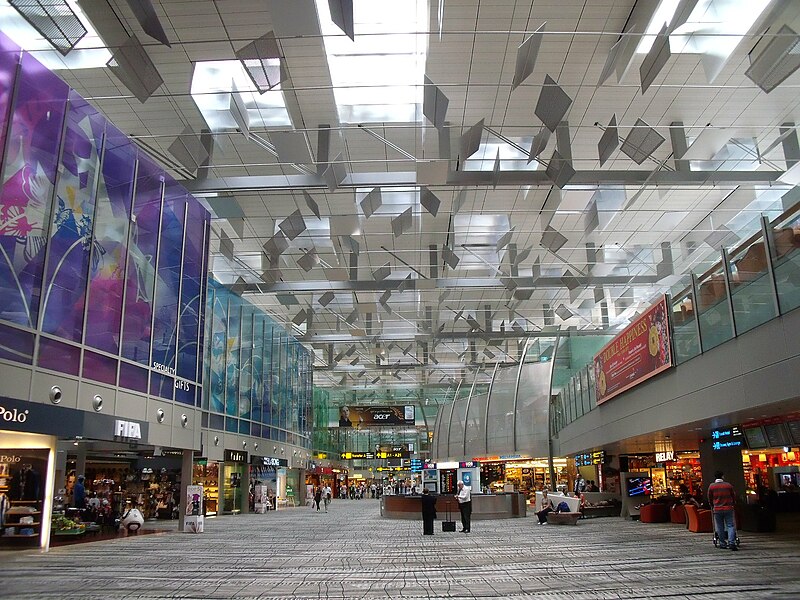
2. INCHEON INT’L AIRPORT
Incheon International Airport is the largest airport in South Korea and one of the busiest airports in the world. It is a former winner of the Airport of the Year title at the World Airport Awards.
Incheon International Airport is located west of Incheon’s city center, on an artificially created piece of land between Yeongjong and Yongyu islands. The two islands were originally separated by shallow sea.
The airport has a golf course, spa, private sleeping rooms, ice skating rink, a casino, indoor gardens and a Museum of Korean Culture. Airport authorities claim that average departure and arrival takes only 19 minutes (60 minutes world-wide industry average) and 12 minutes (45 minutes) respectively, significantly lower than the rest of the world, making it one of the fastest airports in the world for customs processing The airport also holds an unbreakable record of being ranked the Best Airport Worldwide for 7 consecutive years by the Airports Council International (ACI)’s Airport Service Quality award from year 2005 to 2011, and was also rated the world’s best among airports of its size (25-40m) and region (Asia-Pacific) in year 2012 (wiki source)

pic credit : Incheon International Airport
Munich Airport is the second busiest airport in Germany and the secondary hub for Lufthansa German Airlines. Munich Airport has connections to destinations all over the world, but much more besides. With over 150 retail stores and some 50 places where you can eat and drink, it’s like a city center, offering travelers and visitors plenty to see and do.
Flughafen München, is the international airport of Munich, the capital of Bavaria. It is the second busiest airport in Germany in terms of passenger traffic behind Frankfurt Airport, and the seventh busiest airport in Europe, handling 39.7 million passengers in 2014, an increase of close to 3% from 2013. It is the world’s 14th busiest airport in terms of international passenger traffic, and was the 30th busiest airport worldwide in 2013. As of March 2015, the airport features flights to 228 destinations in 66 countries.

Pic Credit : Munich Airport
Hong Kong International Airport serves over 100 airlines operating flights to about 180 locations worldwide, including 44 destinations on the Chinese Mainland. It is a former, multiple winner of the Airport of the Year title at the World Airport Awards.
It is located on theisland of Chek Lap Kok, which largely comprises land reclaimed for the construction of the airport itself. The airport is also colloquially known as Chek Lap Kok Airport. The airport has been commercially operational since 1998, replacing the former Kai Tak Airport, and is an important regional trans-shipment centre, passenger hub and gateway for destinations in Mainland China (with 45 destinations) and the rest of Asia. The airport is the world’s busiest cargo gateway and one of the world’s busiest passenger airports
HKIA is an important contributor to Hong Kong’s economy, with approximately 65,000 employees. More than 100 airlines operate flights from the airport to over 180 cities across the globe. In 2014, HKIA handled 63.3 million passengers,making it the 10th busiest airport worldwide by passenger traffic. It also surpassed Memphis International Airport to become the world’s busiest airport by cargo traffic.
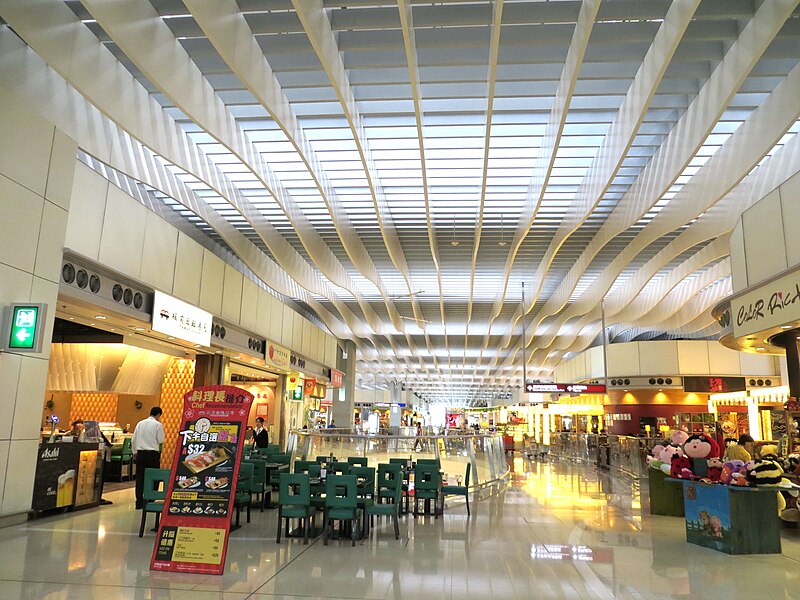
- TOKYO INT’L AIRPORT HANEDA
Boasting both domestic and international terminals, Tokyo International Airport Haneda plays a very important role in furthering Japan’s development as a tourism-oriented nation
Haneda handled 72,826,862 passengers in 2014; by passenger throughput, it was the second busiest airport in Asia and the fourth busiest in the world, after Hartsfield-Jackson Atlanta International Airport, Beijing Capital International Airport (Asia’s busiest) and London Heathrow Airport
It is able to handle 90 million passengers per year following its expansion in 2010. With Haneda and Narita combined Tokyo has the third busiest city airport system in the world, after London and New York City.

Pic credit : Tokyo International Airport
- ZURICH AIRPORT
Zürich Airport is the largest international airport of Switzerland and is the principal hub for Swiss International Air Lines.
Zurich Airport is also known Kloten Airport, is the largestinternational airport of Switzerland and the principal hub of Swiss International Air Lines. It serves Zürich, Switzerland’s largest city, and, with its surface transport links, much of the rest of the country. The airport is located 13 kilometres (8 mi) north of central Zürich, in the municipalities of Kloten, Rümlang, Oberglatt, Winkel and Opfikon, all of which are within the canton of Zürich.
The new terminal B opened in November 2011, and provides segregated access to and from aircraft for Schengen and non-Schengen passengers. Zurich Airport handled 25.5 million passengers in 2014, up 2.5 percent from 2013.

pic credit : zurich airport (wiki)

Swiss International Air Lines Airbus A330-300 and Airbus A340-300 at Zurich Airport
- CENTRAL JAPAN INTERNATIONAL AIRPORT
In 2014, 9.8 million passengers travelled through Central Japan International Airport in Nagoya, better known as Centrair. The airport has a large domestic traffic percentage, with a number of regional routes operated to Asiana cities such as Bangkok and Singapore. Longer haul routes include Helsinki, Frankfurt, Honolulu and Detroit.
Centrair is classified as a first class airport and is the main international gateway for the Chūbu (“central”) region of Japan. The name “Centrair” is an abbreviation of Central Japan International Airport, an alternate translation used in the English name of the airport’s operating company, Central Japan International Airport Co., Ltd
Chūbu is Japan’s third off-shore airport, after Nagasaki Airport and Kansai International Airport, and is also the second airport built in Japan on a manmade island. There are currently 5 offshore airports in Japan, including Kobe Airport andKitakyushu Airport.


- LONDON HEATHROW AIRPORT
London Heathrow Airport is the busiest airport in the UK and busiest airport in Europe by passenger traffic, and having been world’s busiest airport for international passengers, it has recently lost this title to Dubai Airport.
Heathrow Airport is a major international airport in west London, England. Heathrow is the busiest airport in the United Kingdom and the busiest airport in Europe by passenger traffic. Heathrow is also the third busiest airport in the world by total passenger traffic. In 2014, it handled a record 73.4 million passengers, a 1.4 percent increase from 2013
Heathrow Airport is used by over 90 airlines flying to 170 destinations worldwide. The airport is the primary hub of British Airways, and is a base for Virgin Atlantic. It has four passenger terminals (numbered 2 to 5) and a cargo terminal. Of Heathrow’s 73.4 million passengers in 2014, 93% were international travellers; the remaining 7% were bound for UK destinations

Terminal 4 bird’s-eye view
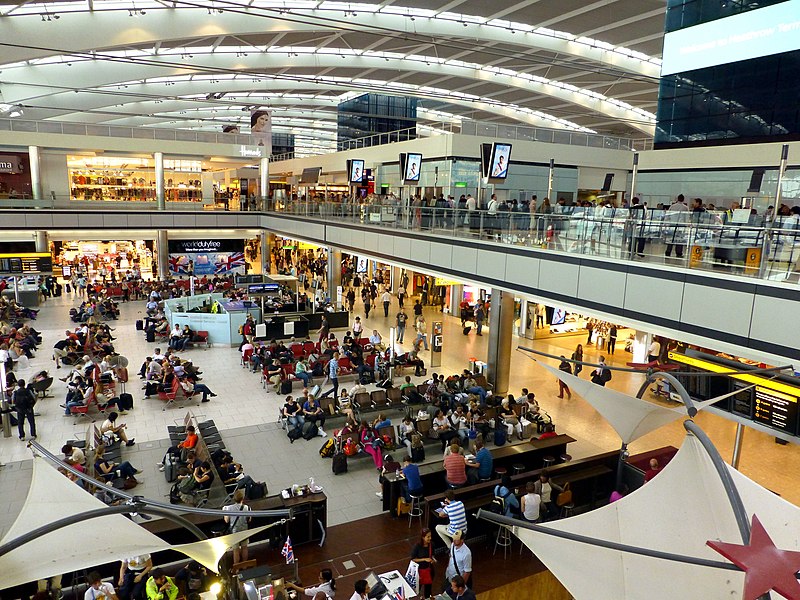
- AMSTERDAM SCHIPHOL AIRPORT
In 2014, 55 million passengers travelled via Amsterdam Airport Schiphol, which describes itself as an AirportCity, much more than just a place where you wait until your flight takes off.
Schiphol Airport is an important European airport, ranking as Europe’s 5th busiest and the world’s 14th busiest by total passenger traffic in 2013 (16th in 2012). It also ranks as the world’s 6th busiest by international passenger traffic and the world’s 16th busiest for cargo tonnage. 52.569 million passengers passed through the airport in 2013, a 3% increase compared with 2012.[4] Schiphol’s main competitors in terms of passenger traffic and cargo throughput are London Heathrow Airport, Frankfurt Airport, Paris–Charles de Gaulle Airport and Madrid–Barajas Airport.Schiphol Airport operated as of 2015 , 54,978,023 Passengers , 1,633,195 Freight (tonnes) 438,296 Aircraft movements

Pic credit : Schiphol Airport
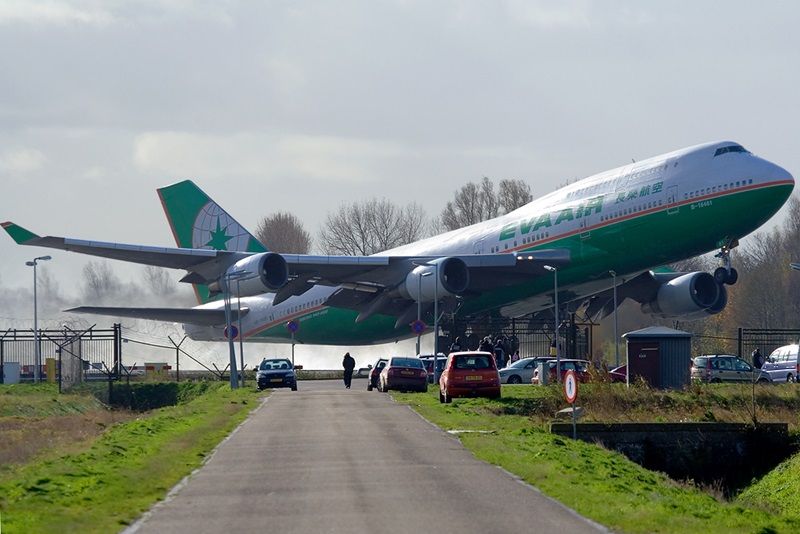
Pic credit : pixter.com
- BEIJING CAPITAL INT’L AIRPORT
Beijing Capital International Airport is the main international airport serving Beijing and from 2014, the second-busiest airport in the world.
Beijing Capital has rapidly ascended in rankings of the world’s busiest airports in the past decade. It had become the busiest airport in Asia in terms of passenger traffic and total traffic movements by 2009. It was the world’s second busiest airport in terms of passenger traffic from 2010-2013 and as of March 1, 2014 it was the second-busiest airport in the world in 2014. The airport registered 557,167 aircraft movements (take-offs and landings), which ranked 6th in the world in 2012. In terms of cargo traffic, Beijing airport has also witnessed rapid growth. By 2012, the airport had become the 13th busiest airport in the world by cargo traffic, registering 1,787,027 tonnes
Source : Skytrack, wiki source

entrance into the main hall of Terminal 3
liked it ..! ?
Share with your friends and families

Aerospace
Indigo will soon launch Air Taxi Service in India

InterGlobe Enterprises, the parent brand of IndiGo, is set to revolutionize travel in India with its upcoming air taxi service.
Scheduled for a potential launch in 2026, this innovative venture promises a seamless journey for passengers between two bustling hubs. Delhi and Gurgaon in Haryana. The forthcoming service is projected to revolutionize the daily commute, offering passengers a swift aerial journey covering the distance in a mere 7 minutes.
This remarkable efficiency contrasts starkly with the conventional 90-minute drive, underscoring the immense time-saving potential for commuters. The anticipated fare, ranging from Rs 2,000-3,000, makes this innovative mode of transport not only swift but also remarkably competitive in pricing.
At the heart of this ambitious endeavor lies a strategic partnership with Archer Aviation, a pioneer in electric vertical takeoff and landing (eVTOL) aircraft technology. Under this collaboration, Archer will supply 200 state-of-the-art eVTOL aircraft, representing an investment of US$ 1 billion. These cutting-edge aircraft, capable of accommodating up to four passengers alongside the pilot, epitomize the future of sustainable air travel.
Powered by six battery packs, Archer’s eVTOL aircraft boast rapid charging capabilities, enabling a swift turnaround between flights. With a charging time of just 30-40 minutes, these eco-friendly aircraft ensure minimal downtime, maximizing operational efficiency.
Similar services are anticipated to be introduced by the joint venture in Bengaluru and Mumbai as well. Nevertheless, the service rollout period has not yet been made public by the company. Next year, it is anticipated to get its certification. Following this, the company will start the certification procedure with the Directorate General of Civil Aviation (DGCA).
Aerospace
Which is bigger 777x or 787 aircraft ?

The 777X is a new series of the Boeing 777 family and is designed to be larger and more efficient than its predecessor. It features two variants: the 777-8 and the 777-9, being the larger of the two.
The Boeing 777X emerges as the larger sibling within the Boeing family, representing a significant leap forward in both size and efficiency. Comprising two variants, the 777-8 and the 777-9, the latter takes the crown as the larger of the two. With its expansive fuselage and impressive wingspan, the 777X is tailored for long-range journeys and boasts a substantial passenger capacity.
On the other hand, the Boeing 787, affectionately known as the Dreamliner, occupies a niche in the market as a smaller yet formidable aircraft designed for medium to long-range flights. Its distinguishing feature lies in its composite fuselage, a technological marvel that renders it lighter and more fuel-efficient compared to conventional aluminum counterparts. The Boeing 777X is larger than the Boeing 787 aircraft.
When it comes to passenger capacity, the 777-9 reigns supreme, typically accommodating a sizeable contingent of 400-425 passengers in its standard configuration. In contrast, the 787, with its more modest dimensions, typically carries between 240-290 passengers, depending on the variant and layout.
One of the remarkable innovations introduced with the 777X is its folding wingtips, a feature designed to address the logistical challenges of accommodating such a large aircraft in conventional airport gates. These folding wingtips enable the 777X to retract its wings, allowing it to fit into gates designed for smaller aircraft while still reaping the benefits of an extended wingspan during flight, thereby enhancing fuel efficiency and operational flexibility
Aerospace
China Secures Production Certificate for Mass Production of Pilotless eVTOL Aircraft

The first passenger-carrying pilotless electric vertical takeoff and landing (eVTOL) aircraft in the world, the EH216-S, has received the Production Certificate for its eVTOL aircraft from the Civil Aviation Administration of China (CAAC).
This is a significant milestone for EHang Holdings Limited, the leading UAM technology platform company in the world. This outstanding accomplishment is another big step towards mass manufacturing for the eVTOL aircraft and the ensuing commercial operations, building on the ground-breaking acquisition of the Type Certificate and the Standard Airworthiness Certificate for the EH216-S.
The PC is a crucial certificate that the aircraft maker receives from the CAAC, the country’s aviation authority. By obtaining this certificate, EHang has demonstrated that it has set up a quality management system for mass production that satisfies the airworthiness regulation standards set forth by the CAAC, and the company has been given permission to continue producing mass quantities.
It is also a strong guarantee of the calibre of the goods made by EHang. Raw materials, supplier management, manufacturing organisation, production quality control, aircraft pre-delivery test, after-sales repair and maintenance, etc. are all included in the mass production quality management system for the EH216-S.
To ensure that every aircraft and its components that roll off the production line strictly adhere to the approved type design and safety requirements, the system sets clear guidelines and documentation for every step in the production procedure. This ensures comprehensive traceability and safety control.



























